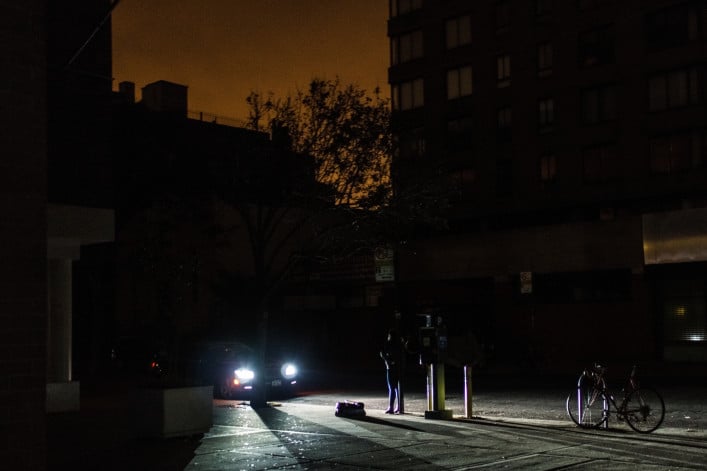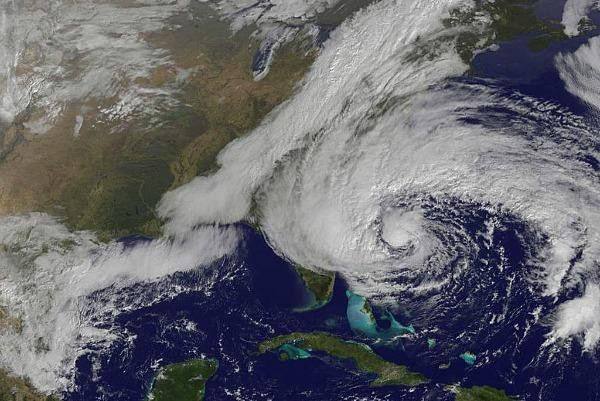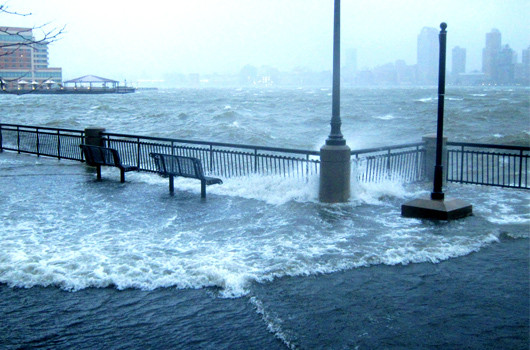What to do when there's a blackout in NYC

Dan Nguyen/Flickr
Today marks the 14th anniversary of the 2003 blackout, which left approximately 50 million people without power. The cascade of failures started when a tree branch touched high-power transmission lines in Ohio, and spread across the Northeast, Midwest, and parts of Ontario, Canada. It was nearly a day and a half before service was restored.
I was 15 at the time, enjoying a particularly hot summer day in my air-conditioned apartment, watching scary movies with my best friend. Our movie day turned into a TV- and AC-less night, and I remember falling asleep in my balmy room with the windows open as my dad listened to then-Mayor Michael Bloomberg reassuring New Yorkers on the radio. (For more New Yorkers' stories, from the hilarious to the downright uplifting read our roundup.)
Thankfully, there has yet to be a repeat of such a big outage, in part because of a series of adjustments the government and electric companies have made since then.
“The likelihood of that same blackout occurring is relatively low because there were some changes in the electrical system that were made to stop that [power outage] from cascading down,” says Henry Jackson, deputy commissioner for technology and strategic resources at the Office of Emergency Management, cautioning that he can't say with 100 percent certainty that it would never happen again.
"It’s a big powerful system, but, knock on wood, we’ve been pretty good the last few years," he says. "But we never say never."
The city has also done a lot to step up its preparedness game, including centralizing public communications, increasing coordination among agency command centers, creating a citywide credentialing plan to ease the movement of resources across the city, and installing more backup generators in city and private buildings. During the blackout, buildings that had generators also experienced problems in some cases because their fuel pumps weren't on backup power, so the city has created a city fuel plan to address this as well.
Still, as Jackson says, emergencies are by their nature unexpected, and none of this means that you shouldn't make your own preparations for a possible future blackout. Below are several pointers from Jackson and the OEM on how to prepare for a power outage.
Plan ahead
“We recommend having a shelter-in-place kit, having food and water at your home in case you have to stay there for a while, and having a radio with batteries so that you can get information if nothing else is working,” Jackson says.
The preparedness agency also recommends having first-aid supplies, LED flashlights, Iodine tablets for disinfecting water if needed, and personal hygiene items.
Jackson stresses the importance of having a specific communication plan in place. “One of the things that’s really most important to people is communicating with their family and their friends, so make that communication plan now,” he says. Appointing someone outside of New York as the designated point person for others to call for updates is a good way to ensure everyone stays in the loop if cell service is disrupted.
Don’t panic
In an age of terrorist attacks, it can be easy to lose your cool, but it’s important to stay as calm as possible.
“We like to keep these things simple. We don’t want people to panic,” Jackson says. “We want people to seek news media so they have some information about what’s going on, and we may be directing people to do things through the media, or you may be comforted by what the media is saying.”
Be neighborly
One of the first things I remember my mom doing when we lost power in 2003 was to check on several of our elderly neighbors. She made sure they had enough water and food, and my friend and I passed around a few extra flashlights that were in my apartment.
As Jackson sees it, looking out for your neighbors is always something to keep in mind in the event of a blackout.
“Another thing we ask people to do, especially in hot weather or really cold weather, is to check on vulnerable neighbors,” he says. “We like to have people help other people because it’s a big job and we need a lot of help.”
Look out for people with special needs
For New Yorkers with disabilities or other medical needs, a blackout can be especially daunting and scary, so the OEM has plans in place especially for them.
The department’s My Emergency Plan is a workbook designed to help New Yorkers — especially those with disabilities and access and functional needs — create a strategy for what to do in an emergency. It’s available in 13 different languages on the OEM website.
The agency recommends that elderly New Yorkers gather additional items that can help in an emergency, such as extra copies of prescriptions and extra pairs of reading glasses, for whether they decide to stay or evacuate. Designating a neighbor to check on you if you have medical needs is also important, in addition to designating a far-away emergency contact.
Know the right resources
For more information on how to prepare for a blackout or other emergency, consult the OEM website. In addition to the helpful guides we mentioned, you will also find guides for pet owners, parents with small children, teachers, teens, and business owners.
Lastly, OEM also offers the Ready NYC app, which allows users to make an emergency plan using their Apple or Android devices. The app is designed to walk New Yorkers through making an emergency plan, using many of the tips discussed above, before disaster strikes.
You Might Also Like































